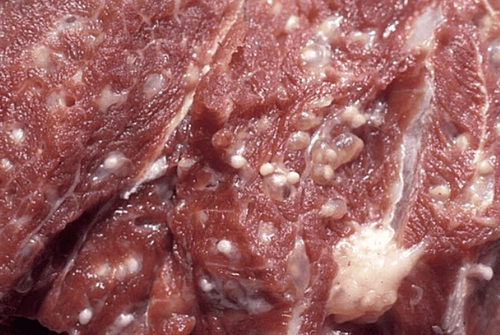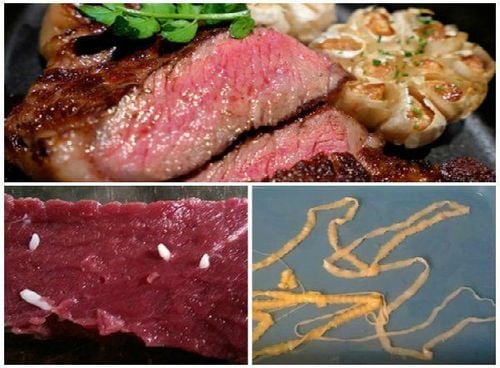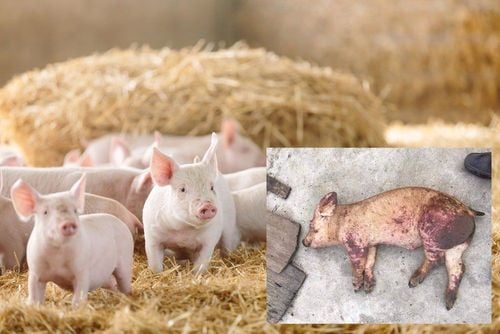This is an automatically translated article.
The article was professionally consulted with MSc.BSCKII Phan Thi Minh Huong - Gastroenterologist, Vinmec International Hospital Da Nang.Recently, African swine fever appeared and quickly spread to many provinces and cities across the country. People need to pay attention, when choosing to buy pork, they should go to reputable addresses and need to know how to distinguish meat contaminated with African swine fever.
1. African swine fever
Last February was the time when the first outbreak of African swine fever was detected in Long Bien district. To date, African swine fever has spread to nearly 9,500 farming households across 24 districts in Hanoi. The progress of the epidemic has become unusual in the past 20 days.This epidemic will continue for a long time, so epidemic prevention and control needs to be quickly strengthened. In addition, the government is currently mobilizing the necessary forces to participate in the control of African swine fever. In addition, local authorities also informed households that when sick pigs had to be destroyed promptly and transparently, to avoid spreading to neighboring households. At the same time, the consumption of disease-free pigs must also be promoted, because pork without African swine fever is completely safe for people's health.
2. How to recognize African swine fever thịt
Pork infected with African cholera often appears hemorrhagic spots located under the skin, on the ears, similar to mosquito bites. On the four legs, belly and chest of infected pigs will be blue-purple. When dissected and observed, cholera pigs often have bloody fluid in the abdomen and chest cavity. In addition, the whole pig's internal organs and body are bleeding, the spleen is enlarged, the lungs are not collapsed, the lymph nodes are larger, the trachea is often bloody, containing a lot of foam, the kidneys are also bloody, ulcers gastric mucosa, intestinal obstruction and in the intestine contain blood.Meat contaminated with African swine fever is completely recognizable with the naked eye. If you observe that the meat has a strange color such as brown, gray, dark red, light green, the skin is covered with blood, the pig's ears are purple, when touching it, it is viscous, oozing... then it is pork. rancid or had swine cholera.
Meanwhile, healthy pork will have a natural bright red color, bright white fat, completely free of strange spots or unusual marks, when pressed with fingers, do not dent or ooze.
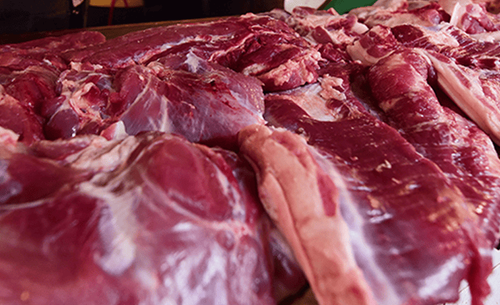
Thịt lợn nhiễm tả lợn Châu Phi có thể nhận biết được bằng mắt thường
For meat marinated with preservatives, the sign will be somewhat different from that of meat contaminated with African swine fever. Chemically contaminated meat will be bright red, but the meat fibers will be abnormally hard and lose elasticity. If you cut deep inside, the meat is quite soft, there is a discharge phenomenon, a slightly dark color, and an unusual smell. When this type of meat is washed, it will turn pale, have a very unpleasant fishy smell, and the fat will be yellow. When cooked, the gravy becomes cloudy, has a bad smell, the fat on the surface is separated into small round balls, instead of the big scum like with fresh meat.
To avoid buying pork contaminated with cholera, consumers should choose to buy meat at reputable addresses, such as supermarkets, stores specializing in providing clean meat. Do not like cheap prices but buy meat at points of sale of unknown origin, where exposed to a lot of dust, flies, and no safety measures.
In addition, consumers should adhere to eating cooked, drinking boiling water, not eating blood pudding or using pork that has not been processed and cooked thoroughly. In the process of processing pork, housewives need to wash meat with dilute salt water before cooking, wash hands before and after cooking. When finished cooking, should be eaten immediately, avoiding the long term will create conditions for bacteria to invade and multiply. Also, do not place cooked food next to raw food or utensils. Food preparation utensils, such as knives and cutting boards, should be washed before and after use.
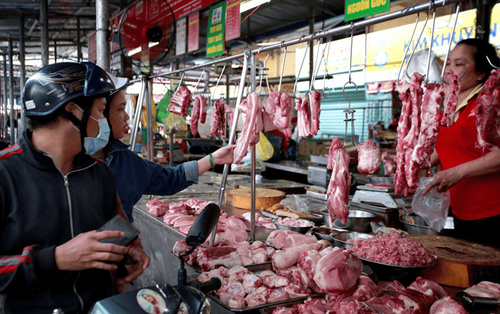
Mua thịt lợn ở đâu an toàn là nỗi băn khoăn của rất nhiều người
Please dial HOTLINE for more information or register for an appointment HERE. Download MyVinmec app to make appointments faster and to manage your bookings easily.




